Key takeaways:
- Rim lighting highlights edges of a subject, creating depth and emotional resonance, enhancing visual focus and storytelling.
- Essential equipment for rim lighting includes off-camera flashes, continuous LED lights, softboxes, and reflectors, all contributing to achieving the desired glow and stability.
- Common mistakes in rim lighting involve misjudging light intensity, incorrect light angles, and neglecting the subject’s wardrobe, which can detract from the intended effect.
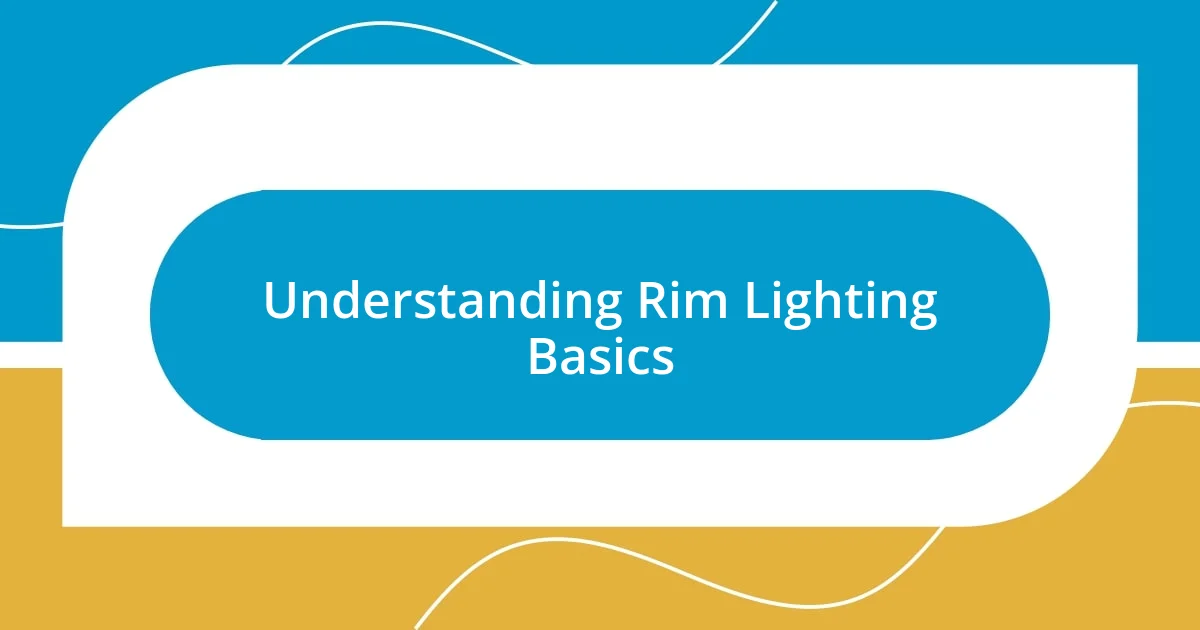
Understanding Rim Lighting Basics
Rim lighting is a fascinating technique that highlights the edges of a subject, creating a soft glow that separates it from the background. I remember the first time I experimented with this technique; I was taken aback by how it transformed an ordinary portrait into something visually striking. Did you ever notice how a well-lit edge can evoke emotions and bring depth to an image?
This technique often involves placing a light source behind the subject, which results in a halo effect that accentuates contours. It’s a profound way to add drama and focus, particularly in portraits. When I used rim lighting for a recent photography project, I could feel the energy change in my images—suddenly, they felt alive and dynamic.
What’s particularly captivating about rim lighting is how it draws the viewer’s gaze directly to the subject. It not only elevates the aesthetic but also tells a story. Have you ever looked at a photo where the subject just pops out at you? That magic often comes from understanding and mastering rim lighting techniques. Each time I delve into it, I discover something new and exciting.
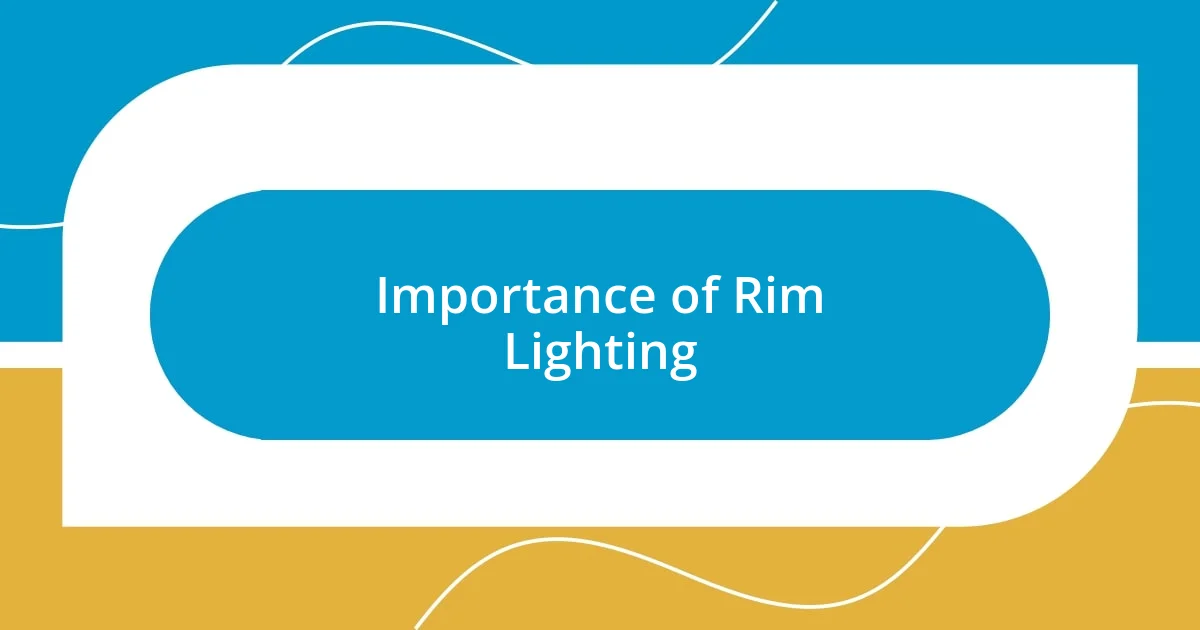
Importance of Rim Lighting
Rim lighting is crucial for creating a striking visual impact, as it emphasizes the subject’s shape and form. I vividly remember a shoot where I experimented with a rim-lit silhouette against a sunset. The way that warm light outlined my subject was nothing short of magical; it felt like they were glowing. This technique truly brings dimension to an image, allowing the viewer to feel a sense of presence and depth.
Here are some key reasons why rim lighting is important:
- Separation from Background: It effectively distinguishes the subject from the background, enhancing focus.
- Emotional Resonance: A well-lit rim can evoke feelings, drawing viewers in and allowing them to connect with the subject.
- Visual Interest: It adds complexity and intrigue, transforming simple shots into captivating works of art.
The ability to manipulate light and shadow with rim lighting has genuinely changed the way I approach photography. Each shoot becomes an adventure in capturing not just images, but feelings.

Equipment Needed for Rim Lighting
When it comes to rim lighting, having the right equipment is essential to achieving that signature glow. At the very core of this technique is a reliable light source. I often use an off-camera flash or continuous LED lights. These options provide flexibility and control over the intensity and angle of light. In my experience, continuous lights make it easier to visualize how the light interacts with the subject in real-time, which is especially helpful when setting up shots.
In addition to lighting, consider investing in modifiers like softboxes or reflectors. These tools allow you to soften and shape light, creating a more aesthetically pleasing rim effect. I’ve found that using a five-in-one reflector brought a delightful warmth to my portraits, infusing them with character. Remember, it’s all about exploring different setups to see what resonates with your style and approach.
Lastly, don’t overlook the importance of a sturdy tripod. Stability can make or break a shoot, especially when dealing with low light situations typical in rim lighting setups. I recall a time when my tripod saved a shot that would have been lost to camera shake; the resulting image was impeccably sharp and showed off the rim effect beautifully. Investing in quality equipment may seem daunting, but it’s certainly worth it for the artistry you can achieve.
| Equipment | Description |
|---|---|
| Off-Camera Flash | Offers flexibility and control over lighting intensity. |
| Continuous LED Lights | Allows for real-time visualization of lighting effects. |
| Softboxes | Helps soften and diffuse light for a gentle rim effect. |
| Reflectors | Enhances light quality and adds warmth to images. |
| Tripod | Provides stability for sharp images in low-light scenarios. |
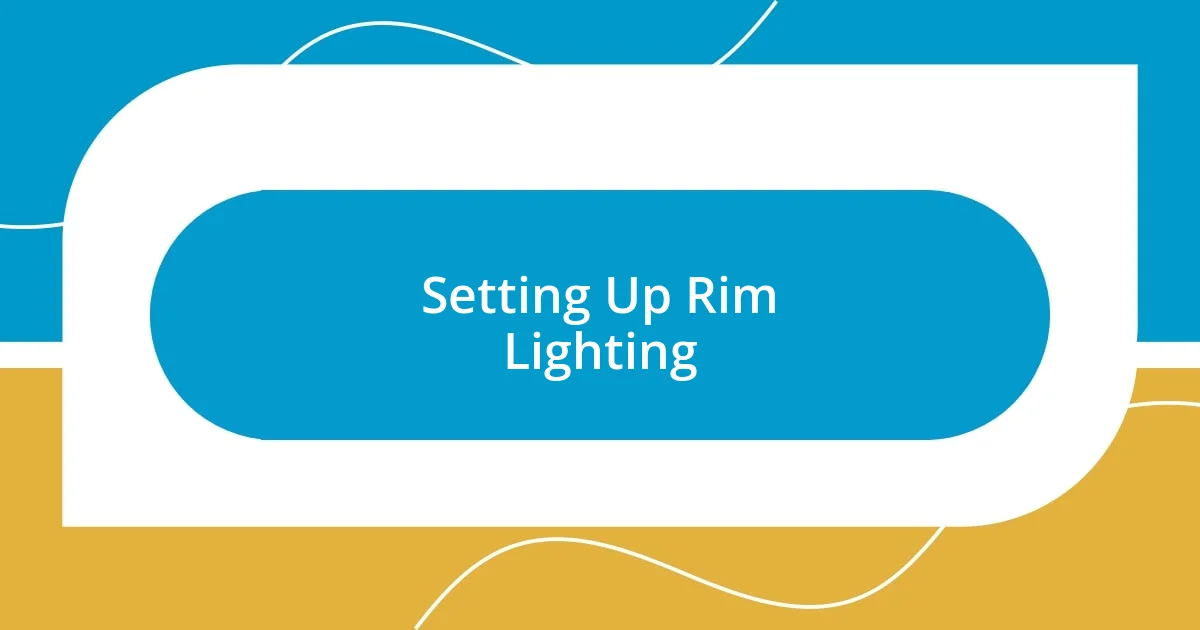
Setting Up Rim Lighting
Setting up rim lighting requires a thoughtful approach to positioning and angles. I remember the first time I placed a light behind my subject; it caught me off guard how dramatically it transformed the scene. I was shocked to see that a simple adjustment could shift the mood from mundane to cinematic with just the flick of a switch. Have you ever experienced that moment of pure revelation while shooting?
The key to effective rim lighting is understanding your light placement. I typically start by positioning the light at a 45-degree angle behind and slightly above my subject. This not only creates that beautiful outline but also adds depth to the image, making it pop against the background. There’s something incredibly satisfying about nailing the setup on the first try—almost like a secret handshake with the universe of photography!
Don’t forget about the background! I’ve made the mistake of not considering what’s behind my subject, which can completely diminish the rim effect. The background should ideally be darker to accentuate that glow. I often find myself experimenting with different locations, ensuring that each element in the frame contributes to the overall story. What’s your go-to technique for testing out different setups? I believe that finding the right balance can lead to some truly unforgettable shots.
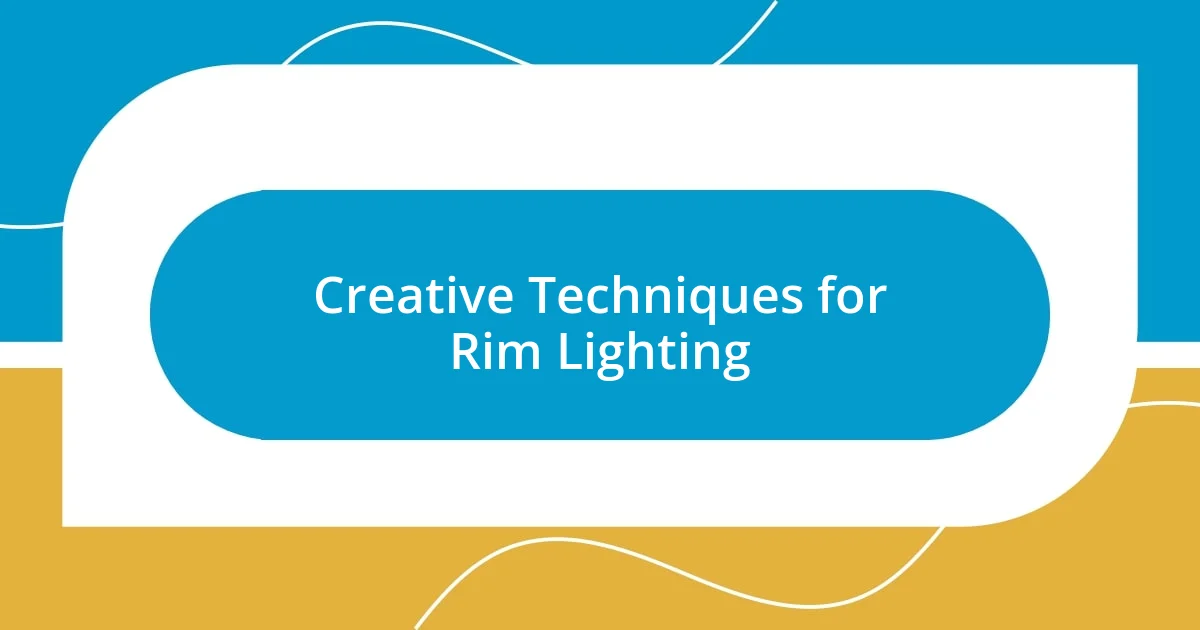
Creative Techniques for Rim Lighting
Rim lighting can be invigorated with creative techniques that push the boundaries of traditional setups. One of my favorite approaches involves using colored gels on my lights. The first time I experimented with a teal gel behind a model, it added a striking contrast that made the rim light pop against her hair and skin tone. Have you ever imagined a simple color shift creating an entirely different mood in your photo? It’s like a brushstroke on a canvas, radically altering the composition with just a hint of hue.
Another technique I love is incorporating multiple light sources to create layered effects. Strategically placing a second light in front of the subject, while maintaining that key light behind, not only highlights their features but also enhances textures. I remember capturing a stunning portrait of a musician where the rim light added a halo effect, and the frontal light illuminated his guitar, creating a beautiful interplay of light and shadow. It felt like a moment of magic – every detail sang in harmony. What happens when you layer lights? You create depth and drama that invites viewers to linger a little longer.
Lastly, I can’t stress enough the importance of experimenting with angles and distances. Once, while photographing a dancer, I moved the rim light further back to see how it changed the intensity and spread. The distance created a softer glow that beautifully enveloped her figure, resembling an ethereal presence. It was a revelation! Have you played with the distance in your rim lighting setups? I truly believe that such experimentation can unveil new dimensions to your artistry, leading to unexpected and breathtaking results.
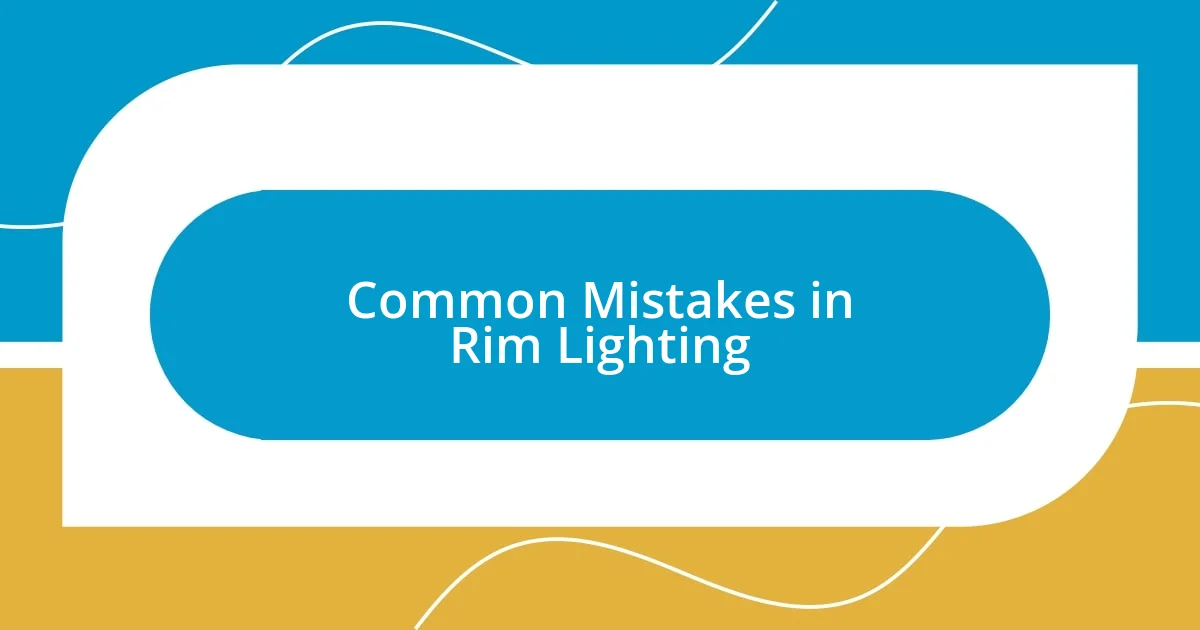
Common Mistakes in Rim Lighting
When diving into rim lighting, one of the most common mistakes I’ve encountered is misjudging the light intensity. Early on, I cranked up the power, thinking it would create a stronger outline. Instead, I ended up with harsh shadows that distracted from the subject’s features. Have you ever had an experience where too much of a good thing became a barrier to what you were trying to achieve? It’s often about finding that sweet spot where the light enhances, rather than overwhelms.
Another pitfall I’ve faced is not considering the angle of the light in relation to the subject’s shape. I remember a shoot where I positioned the light directly behind my model, only to discover that it flattened her silhouette instead of highlighting it. It’s so important to experiment with angles; each slight adjustment can completely alter the narrative of your image. Have you ever had a setup that seemed right on paper but fell flat in reality? These moments can be frustrating, yet they often lead to the most insightful learning experiences.
Lastly, I’ve seen many photographers, myself included, overlooking the impact of the subject’s wardrobe. One significant shoot sticks in my mind—my model wore a busy patterned shirt that fought against the rim light. It was disheartening to see the light not achieving its full potential due to this distraction. A solid or monochromatic outfit can really help the rim lighting shine, focusing attention where it belongs. Isn’t it interesting how wardrobe choices can make or break the overall effect you want to create? Each element in your composition plays a vital role in conveying your artistic vision.














